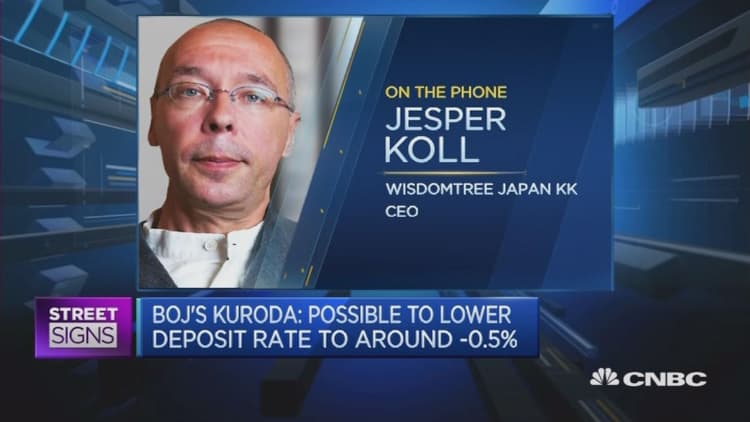The strengthening yen could see Japan's central bank eke out more stimulus as early as next month, confounding expectations for policy inaction following January's surprise move to negative interest rates.
The yen rallied to 110 against the greenback during Thursday's U.S. session, its strongest level since October 2014, amid relentless dollar selling after the Federal Reserve played down prospects for tighter monetary policy on Wednesday.
"At these [yen] levels, it is hard to see the Bank of Japan not extending their stimulus program in some form at their April 28 meeting," IG market strategist Angus Nicholson said on Friday.
A stronger yen hurts Japan's economy and is especially detrimental to the export sector because it makes local goods more expensive for overseas buyers, providing a fillip to rival Asian manufacturers with weaker currencies, such as South Korea.
The central bank held fire at Monday's monetary policy review, as anticipated, and economists believed it would continue to take a wait-and-see approach to assess the impact of January's negative interest rates decision. But that may no longer be the case.
"If USD/JPY drifts lower again, we expect more aggressive action from the Bank of Japan," Kathy Lien, managing director of FX strategy at BK Asset Management, said on Friday.

As an indicator of just how worrying the latest currency strength is to Japan, strategists believe the BOJ intervened in markets on Thursday in attempt to move the yen off its 16-month peak.
"In a matter of minutes right around lunchtime in the U.K., USD/JPY jumped nearly 100 pips from its low of 110.67. This is the third time in two months that the BOJ stepped in to buy USD/JPY below 111 as they clearly don't want to see the currency pair trading on the 110 handle," observed Lien.
During early Asian trade on Friday, the pair hovered around 111.
Japanese finance minister Taro Aso said on Friday that he was closely monitoring the currency's moves, but minutes released at the market open from the central bank's January meeting made no mention of the yen.
"At 113, the BoJ has leeway to wait but at 110-111 with the risk of further losses, they may not be able to forestall easing for much longer," said Lien.
Indeed, market players are betting on further declines on the basis of broad dollar weakness, with Barclays expecting the currency pair to hit 108 by mid-year.
In a note on Thursday, Barclays noted that shorts positions on the U.S. dollar were at a three-year peak, but said it believed there was room for bets against the currency to further increase as it no longer expected the Fed to hike rates in 2016 or 2017, implying the dollar bull market was set to enter a long pause.
While it remains to be seen how long the Fed will tolerate a weaker dollar, the BOJ is likely to be silently cursing the former's decision to take a dovish tone this week, Lien observed.
"Japanese policymakers may have been looking for the Fed to do the heavy lifting - but Yellen failed to deliver and now the risk is to the downside for the dollar," the FX strategist said.


